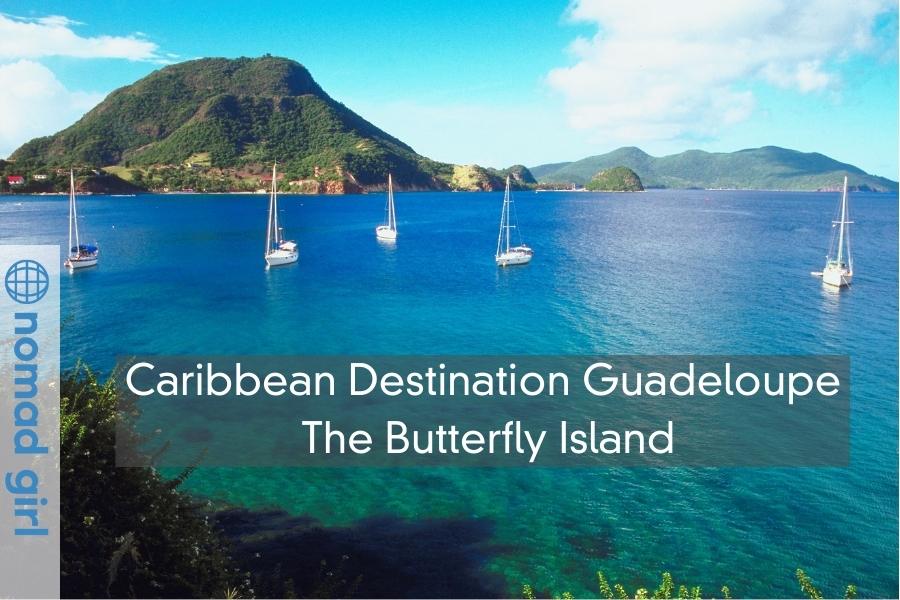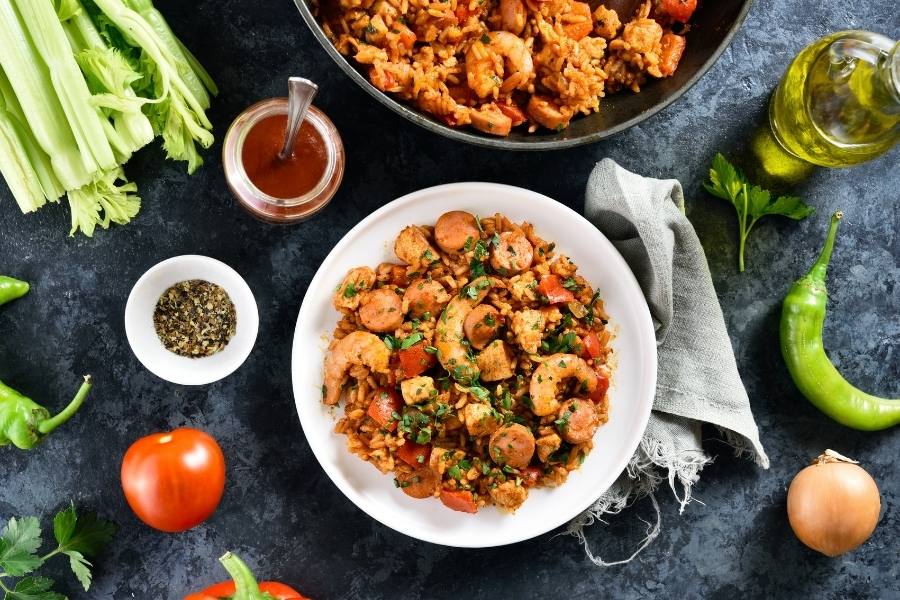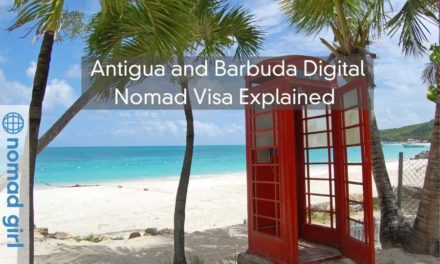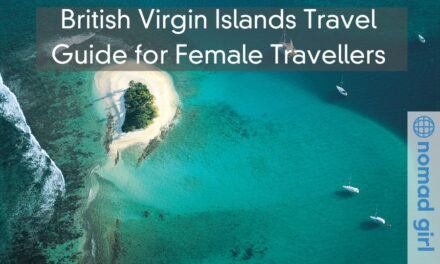Guadeloupe is a nearly perfect paradise. A French overseas department off the coast of Central America, this archipelago of over a dozen islands is indisputably gorgeous, a small butterfly-shaped land of bleached sand beaches and jewelled seas. You flip-flop through a picture post-card panorama every time you leave the house. On palm tree-fringed shores, coconuts and bikini-clad bodies lounge idly. And in crystal clear waters, you can discover an enchanting underwater kingdom of parrotfish, barracuda, turtles and much more.
In Grande Terre, the more populated and developed island wing, the southern coast is generous in its supply of classic Caribbean beaches. Plage de la Caravelle is boisterously beautiful with its palm trees and white sands – although it is also accompanied by the less attractive backdrop of Club Med and is rammed with tourists during the high season.
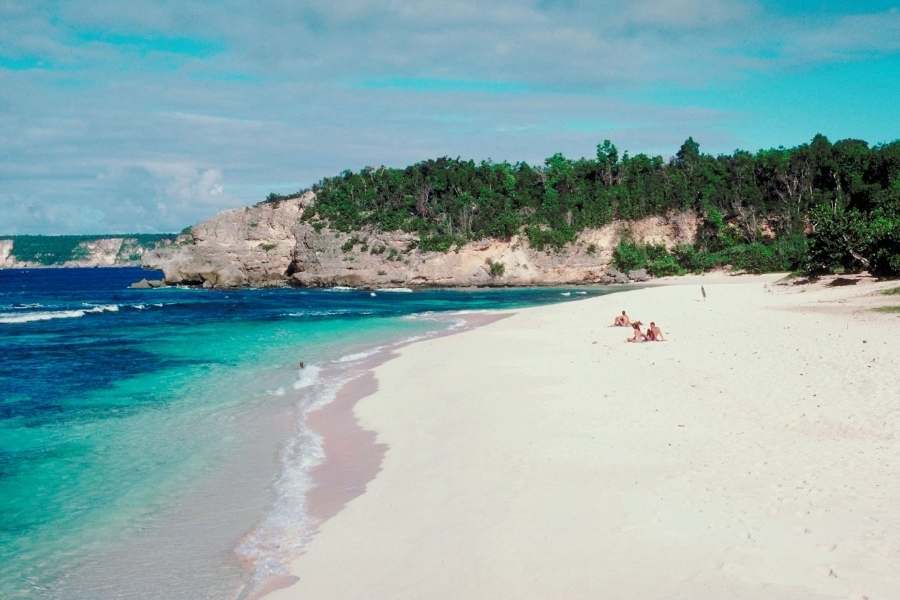
Take a trip out to Pointe des Châteaux, the rocky peninsula on Grande-Terre’s Eastern coast that extends into the Atlantic Ocean. A large white stone cross surveys the entire island from its spectacular look-out point. To the south, you can enjoy views of the mountain range of Basse Terre. To the north, sugar cane fields and wind farms create a striking juxtaposition of Guadeloupe’s old and new life.
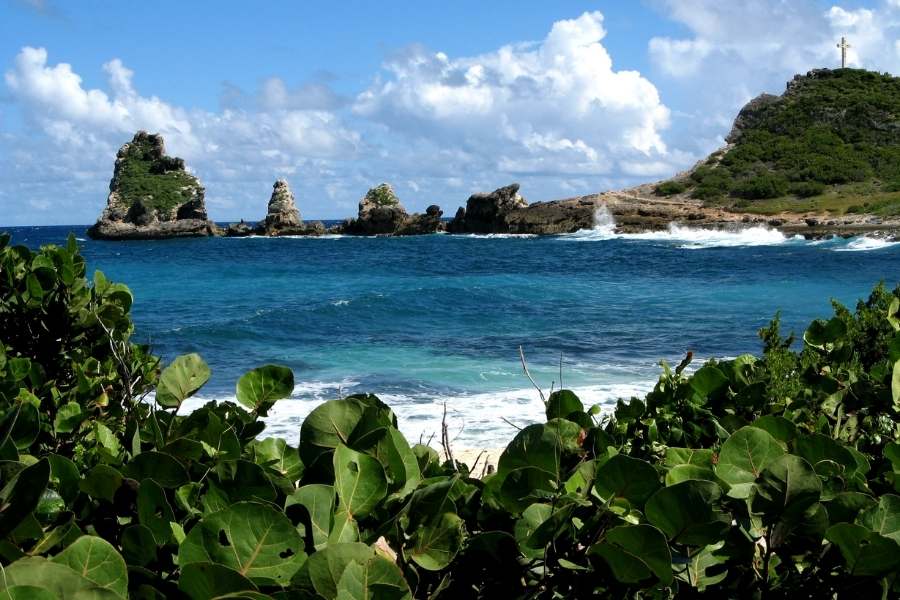
Pointe des Châteaux
At Bois Jolan, five minutes further along the coast, sea-grape trees creep down to the water with their twisted trunks, creating welcome shade for locals and tourists alike who flock here at weekends for picnics and barbecues. Roast chicken on the barbecue, eat passion fruit with a spoon and enjoy the dangerously cheap but delicious rum.

Bois Jolan
Indeed, rum really is the national drink of Guadeloupe. Distilleries are scattered around the island and are well worth a visit. You will be invited to taste different flavours of the spirit and learn about the intriguing history behind rum and the sugar plantations from which it comes.
Driving along the east coast of Grande Terre, you can discover hidden coves snuggled at the base of stark cliff fortresses. Enjoy watching the roaring tides, glimpses of razor-sharp rocks beneath and silky white sands – just watch out for the lethal currents and violent swells.
Sheltered among rocks and plants at the ominously named Porte d’Enfer – loosely translated as Gateway to Hell – you can find a shrine to sailors past, with crosses and Madonnas painted a crumbling turquoise. And, further north, the cave of Trou Man Coco, the birthplace of a fabled demon witch who made a pact with the devil. In fact, this undercurrent of dark magic can be found elsewhere on the island too. In some shops, you might come across Voodoo kits and magic powders to summon disease, divorce, and even death.
-
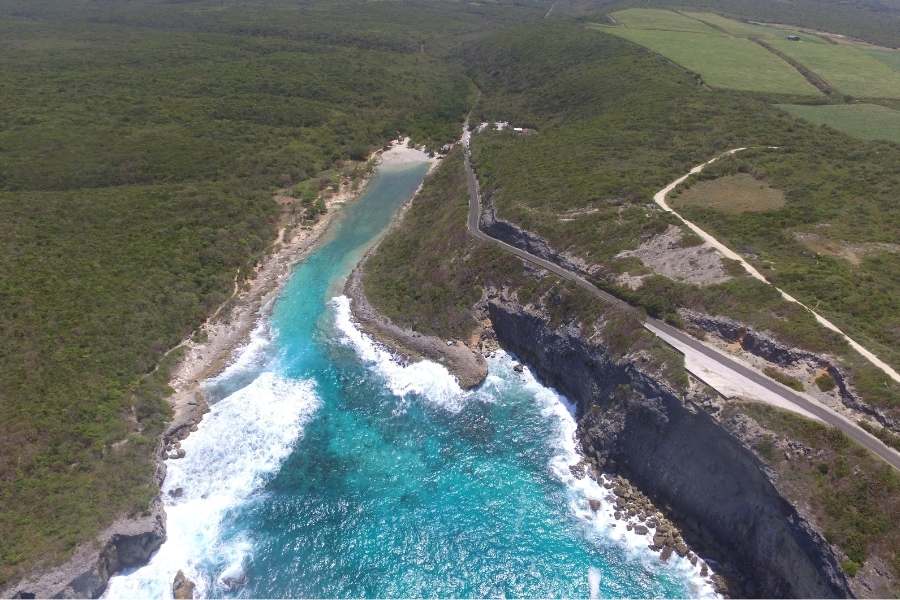
Porte d’Enfer
On the western side of Grande Terre is the old seaside town of Port-Louis, with its sun-bleached wooden houses, a palette of faded pastels and a sense of life on the island during colonial times. Now almost eerily tranquil, you can picture a pre-21st century Guadeloupe, a life lived between porches and fishing boats, sultry evenings stretching out to the rhythm of the ocean lullaby.
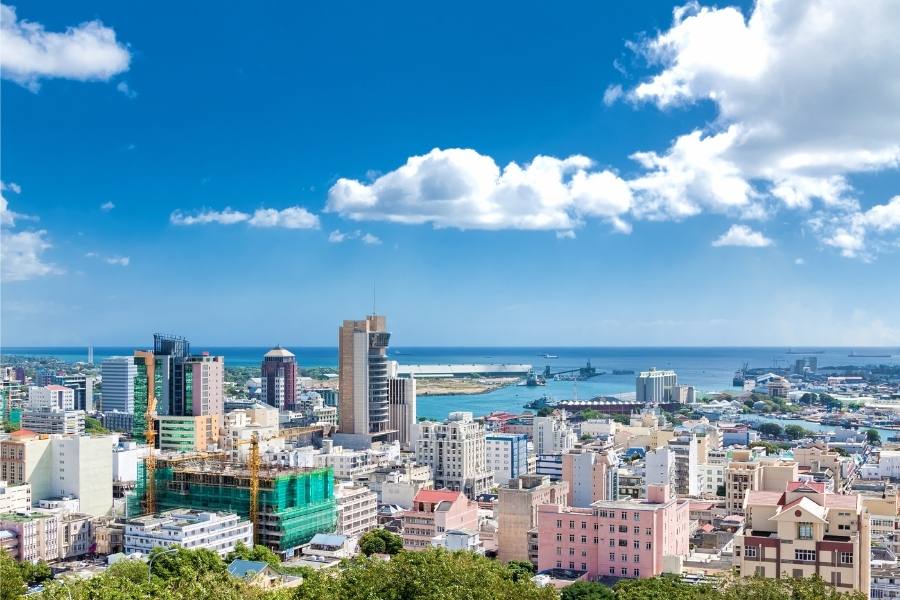
Mangroves, swampy waters and trees with dripping fingers extend right up to the sea. And, although bustling during the weekend with family get-togethers giggling below the cabanas, from four o’clock you will be forced to flee with the arrival of tiny midge-like flies that swarm over your skin with insatiable vigour.
Wetter and cooler than its urban sister, Basse Terre is a welcome relief after the intense heat of Grande Terre. Travelling from one to the other comes with a change of soundtrack. Strident car horns and bass-heavy reggae are replaced with cicadas, frogs and birds. The sounds of modern life are muted by the large green leaves of this cloistered world of rainforests and waterfalls.
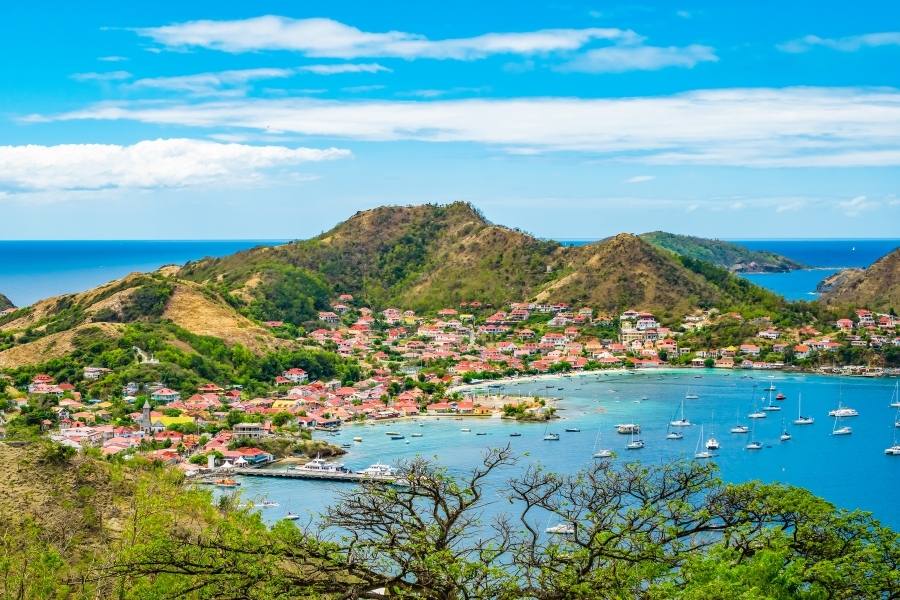
Swim in glassy pools alongside iridescent blue gobies. In the warm dewy vegetation glimpse tree frogs and guavas. The Route de la Traversée takes you through the centre of the island, surrounded on each side by walls of tree ferns and strangler vines, fig trees and bromeliads. Along the coast pass sleepy villages in primary colours, locals gathering on harbour walls in the dying pink light with a beer and a fishing rod in hand.
At the aqua reserve on the West coast, named after marine hero Jacques Cousteau, you can swim with more fish species than you knew existed – you might even spot turtles and dolphins. Meanwhile, beaches include the volcanic Malendure and the dark blond sands of Grande Anse – reportedly one of the most beautiful beaches in the world.
In the south, there is, of course, the volcano: La Soufrière. Still active, in 1976 there was a mass evacuation of the island’s residents after an increase in seismic activity suggested an imminent eruption. While the island was deserted, filmmaker Werner Herzeg travelled around the abandoned Basse Terre and tells the story of the one local who refused to leave in his film about the event.
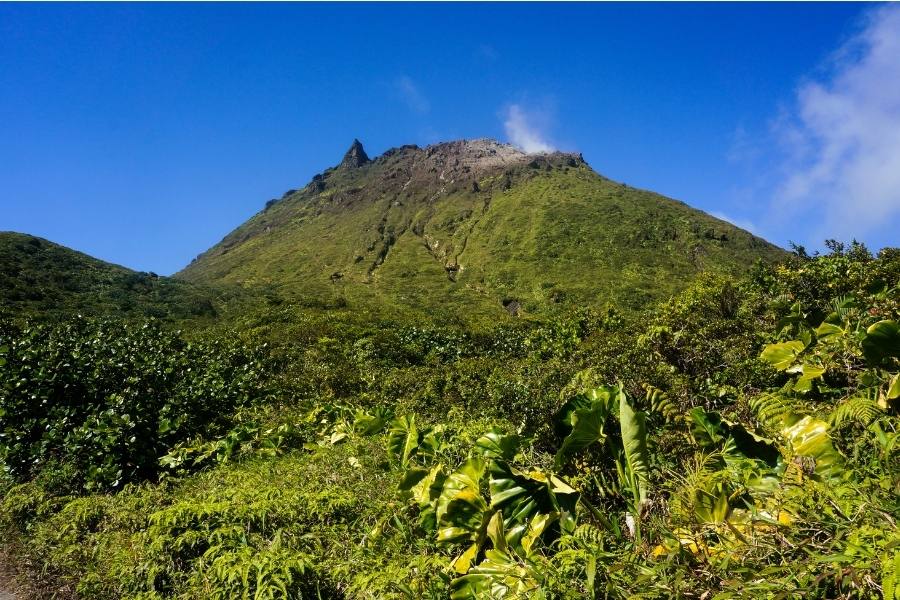
La Soufrière
Today, you can ascend the volcano when you want – but best to attempt the climb early in the morning when it is cooler. You will probably be passed by lycra-sporting locals profiting from the steep ascent as a morning workout. And from the summit, on a clear day, it is said you can spot the neighbouring island of Martinique.
If you feel like escaping the island, why not pay a visit to Les Saintes? One of Guadeloupe’s dependencies, Les Saintes are an outrageously photogenic cluster of hilly islands, decked in velvety green vegetation with tastefully painted wooden houses and roads almost exclusively for the use of scooters. From the cutesy flower arrangements to the miniature coves and jetties, it feels almost like a toy island – the perfect place to spend a weekend away from the mainland.
More rustic but equally beautiful is La Désirade, the oldest island of the Lesser Antilles. With its deserted palm-tree-lined beaches, it is a smaller, more rough-and-ready version of Les Saintes, and its easterly rocky outcrop is a popular site for geologists.
Guadeloupe is a rich mélange of influences: African, French, East Indian and Caribbean, a heady cultural cocktail evident in the architecture, the unique Creole cuisine as well as the Creole language itself. But technically it is French. Its capital is Paris, 4,000 miles away, where bananas are cheaper than in Guadeloupe where they are grown. In fact, the high cost of living – the result of France’s near monopoly on imports – is at odds with the island’s carefree style of living.
Indeed, a c’est pas grave attitude dictates the pace of life in Guadeloupe. Rushing is not a part of the island’s vocabulary – to meet at 7.30 pm could just as easily mean 10.30 pm. Perhaps a good thing when there is not much of a public transport network – waiting up to two hours for a bus is considered normal.
But, undeniably, Guadeloupe is worth any traveller’s time. It has its problems but despite, and perhaps because of this, it is a fascinating and alluring place. Its ethereal, otherworldly wilderness, its tranquil seaside towns, its rich cultural history, and the plodding pace of island life – it should be a wildly popular Caribbean destination. But perhaps all more special because it’s not.


